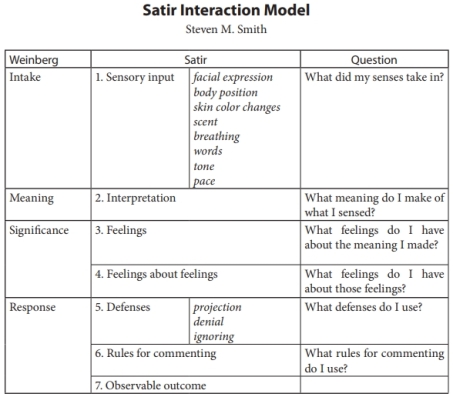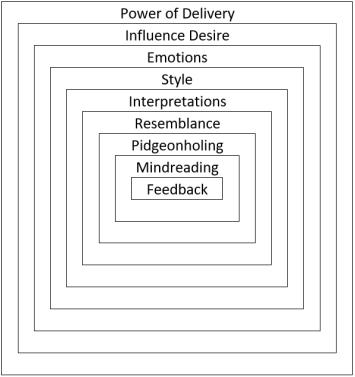The Art of Giving and Receiving Feedback
#learningIsAGift ?
#rituals of #theBeautifulJourney 

The Art of Giving and Receiving Feedback by Gerald Weinberg, Charles N Seashore and Eddith W Seashore is a must read book for everyone who wants to improve communication, in any area of their lives. Each chapter comes with a set of practical exercises that one can do and I decided to do them. Given feedback is a collaborative process which one person cannot sustain alone, I needed someone to practice with. James Thomas agreed to this. For a period of about 3 months at the end of 2017 we’ve covered almost all the chapters. Then, around mid 2018, I’ve proposed to colleagues in the company an optional 1 hour workshop on a few exercises about giving and receiving feedback where we’ve all practiced together. I’ll tell you more about this, the Why and How for the practice and example of What the exercises are in a subsequent article.
Here are my notes extracted from the book for quick reminders whenever I need them.
What is feedback?
- Feedback can be defined as information about past behaviour delivered in the present which may influence future behaviour.
- Good feedback is clear, specific, timed right, non-judgemental, and speaks only to behaviour.
How do you observe feedback?
- What do I see or hear that makes me believe that I’m getting/not getting feedback?
- Johari Window (I’ve mentioned it in A talk on relationships – Am I ready for them? as well)
- Sigmund Freud – defence mechanisms, projection, Freudian slip
- Carl Roger’s theory on self-actualizing – give unconditional positive regard to every person
- Virginia Satir’s interaction model – I found Steven M. Smith’s aligning of the Virginia’s model and Weinberg’s model to be a quick, useful overview:

On the compulsion to give feedback
- Question your motives for wanting to give feedback.
- The first skill you must cultivate is the skill of clarifying your intentions.
- Do I want to empower them, to offer them more choices than they currently have?
- Why do I care about empowering them?
- Better relationships empower both parties.
- Improving a relationship does not always mean making it closer. Establish functional boundaries with everyone, including persons whose behaviour you e.g. don’t like, but have to work with.
- Feedback is about the giver: what is valuable, important or urgent for them.
- If people don’t want your feedback, you’ll never succeed in reaching them, no matter how smart or wonderful you may be.
Hidden motives behind feedback
- Avoidance
- Displacement
- Attack
- Gain status
- Justify the status quo for the sender
Giving feedback when asked
- Feedback that is not absolutely relevant to the task will not be accepted and even worse, will interfere with that task.
- Having a choice among feedback responses empowers you (and the person to whom you respond).
- The less you actually feed back, the more you get out of it.
Responses to feedback
- Positive and Negative cannot be meaningfully applied to the feedback, but only to the receiver’s reaction.
- Your reactions will be perceived by others.
- Other people know when we’re asking for approval, especially when we pretend not to be.
- Never kid yourself. Whenever you have a strong reaction to someone, it shows. Somehow.
- When someone asks for something, ask yourself:
- Do I want to do it?
- Do I have time?
- Do I have the skills? (so that I can also be satisfied by what I can achieve)
- Am I too close to the person to be able to give an honest opinion?
- Can I do, maybe, part of the work?
- Is the format of what I’m given OK for me?
- What is my current investment in exploring that?
Laws that govern feedback
- The Law of Intake
- I can choose to be unaware that feedback is present
- The Law of Conservation of Laws
- When the data and their model don’t match, most people discard the data
- The Feedback Prevention Law
- We will structure our world so we will not receive feedback that threatens our world view
Ways in which feedback is distorted
- Displacement of feedback
- Feedback directed at you that does not belong to you
- Displacement of Person
- X annoyed me, but I’m taking it out on you
- Displacement of Subject
- You did X, but I’ll complain about Y, because X falls in the category of ‘rules of commenting’
- Displacement in Time
- I’m reacting now over something that happened a month ago
- Projection
- Traits that you associate with other people are actually your own and not theirs at all
- Other factors:

Clarifying feedback
- What really makes a relationship bad is that whenever someone tries to extend a warm hand, five times out of six it’s taken as a cold slap.
- Deciphering feedback is a matter of deciphering yourself, not the message.
- The receiver’s priorities determine the significance of the feedback.
- It’s not what you are, it’s not what you do, it’s what you might do that frightens people away.
What to do
- Say what you saw and heard
- Announce your interpretation
- Ask for confirmation
If enough trust exists in the respective relationship, for clarifying feedback you can also add details, as inspired by Virginia Satir’s interaction model, about:
- Meaning you’ve attached to the interpretation
- Feeling you have about that interpretation
- Feeling about that feeling
Context of feedback
- Having shared goals and needs, explicitly or implicitly, to provide the motivation or buy in of the different parties to sustain the process until they reach some reasonable degree of closure
- Jointly managing the climate to minimise resistance to both sending and receiving feedback
- Allowing time for digesting and integrating feedback to prevent overload and excessive stress while being able to return later for clarification or additional exploration
- Managing the relationship so as to allow future interaction while maintaining a climate of directness and openness
Changing through feedback
- You need new environments and the right people
- The people need to feel good enough about themselves to accept your differences
- Certain people can be committed either to changing you or keeping you the same
- Selecting just people who already like your behaviour does not create an environment that can provide feedback leading to change
- When you create a new act/behaviour – you win/lose some
The Necessary Environment for Learning
- Non-threatening
- Once we are involved in a survival issue, there’s little chance that feedback will be heard
- Illuminating
- Separate the signal from the noise
- Apparent
- Make lessons concrete
- Dramatic
- We struggle to perceive our models, thus dramatic presentations have a chance of catching our attention
- Humorous
- Explore alternatives, expose assumptions
Whether giving or receiving feedback, the most important thing is congruence – acknowledging, understanding and accepting what’s going on inside me.
Until next time … Enjoy great feedback! ?
References:
